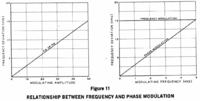kywous
Newbie level 5

I want know which modulation is used. (AM or FM)

In the picture this circuit is wireless microphone and boxed part is 100MHz oscillator. audio signal is amplified and then modulated from this oscillator.
help me.
Exactly, operating frequency is FM band and this circuit is FM Transceiver. but I can't sure that It is FM modulation.

In the picture this circuit is wireless microphone and boxed part is 100MHz oscillator. audio signal is amplified and then modulated from this oscillator.
help me.
Exactly, operating frequency is FM band and this circuit is FM Transceiver. but I can't sure that It is FM modulation.
Attachments
Last edited:






